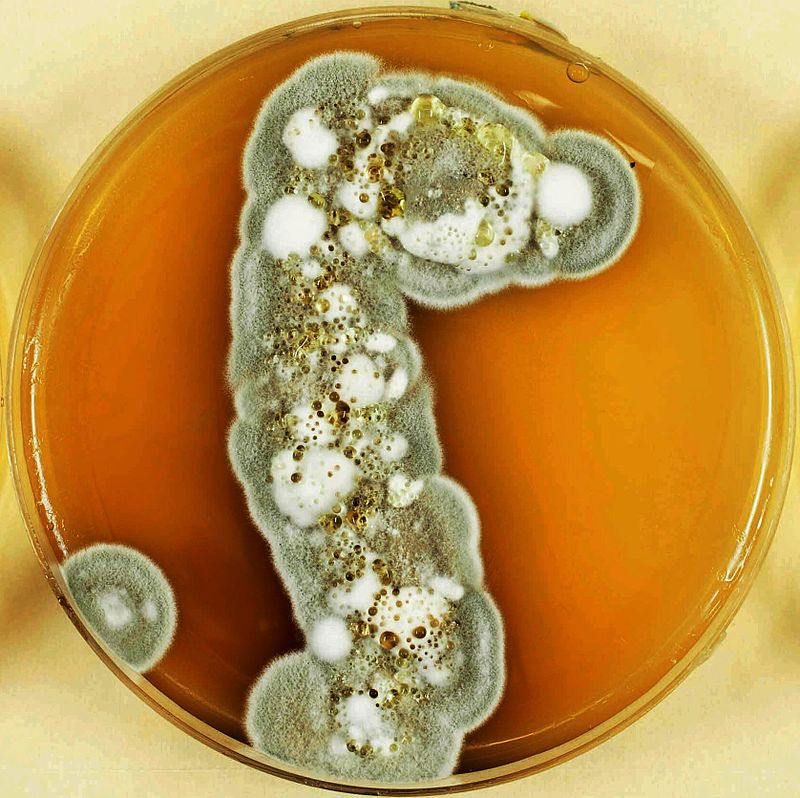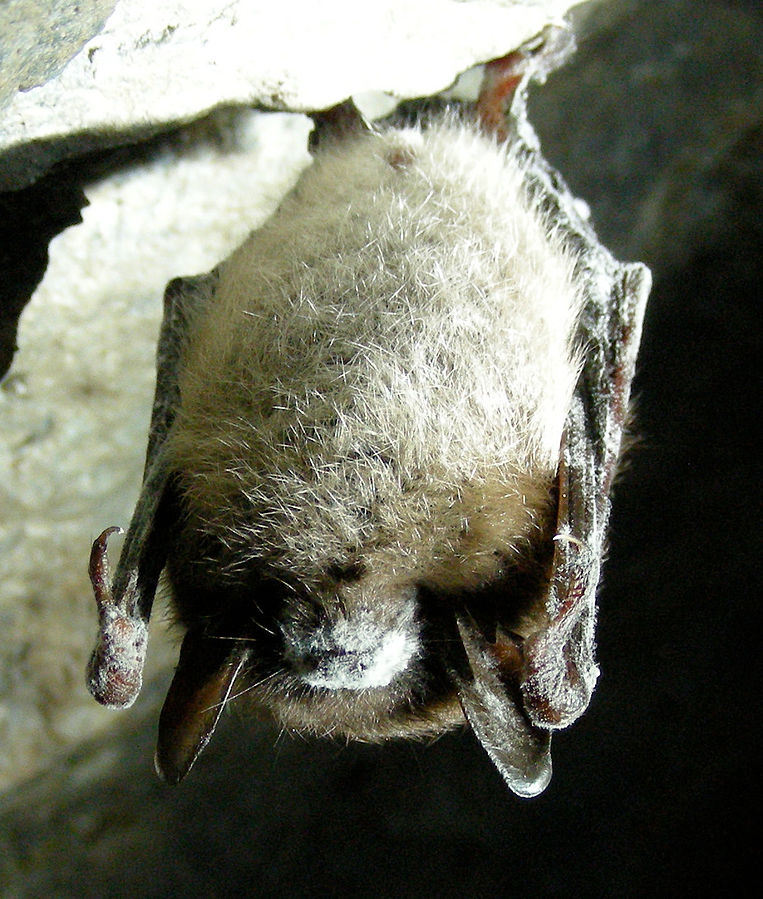White-Nose Syndrome

White-Nose Syndrome
(Pseudogymnoascus destructans)
Tags: Terrestrial
Identification and Reproduction
Biology:
- Pseudogymnoascus destructans is a cold-loving fungus that causes white-nose syndrome.
- It cannot grow at temperatures above 20oC.
- P. destructans grows the best in conditions between 12.5-15.8oC.
- This fungus produces brown and grey colonies.
- It reproduces asexually from curved conidia.
Infection in bats:
- The fungal growth is concentrated around the muzzle and on the wings of hibernating bats.
- This fungal growth can appear like white fuzz around the nose, wings and other hairless parts of the bat.
- Bats are the most vulnerable during hibernation. As they prepare for hibernations their resistance and immunity to pathogens falls to near zero as their metabolisms are shutting down to conserve energy for hibernation.
- The disease damages exposed skin.
- It can also cause abnormal behaviour in bats, such as repeated arousal during hibernation to groom fungal growth during winter.
- It causes increased energy expenditure, leading bats to rapidly use their fat storage, leave winter shelters and can lead to starvation and death.
Habitat & Ecology
- It grows opportunistically on bats as a pathogen but also exists in caves as a saprotroph.
- The white-nose syndrome is a disease that is caused by the fungus, P. destructans, it grows on the bats' skin.
- It can grow and reproduce asexually and sporulate.
- This fungus is thought to orginate from Europe.
- The North American strain currently covers at least 38 states in the USA and 7 Canadian provinces. It has not been detected in BC.
- Studies have shown that physical contact is required for bats to infect one another, or bats become infected within a cave.
- P. destructans has been found in soil samples of infected caves, which can be accidentally carried to other sites for introduction.
Impacts
- In 2018 alone, millions of bats died from white-nose syndrome in Canada.
- In North America alone, this fungus infects at least 13 bat species, from the North American bats, two are endangered and one species is threatened.
- White-nose syndrome affects all life stages of hibernating bats.
- Bat species are at risk of extinction and some have already experienced extirpation from infection of the disease.
- Some bat species populations have plummeted by more than 90% in the last five years.
- It is estimated with the massive decline in bat populations, at least 2.4 million pounds of insects will go uneaten. This in turn will cause a huge nuisance to the forestry and agricultural industry as these uneaten insects will cause crop damage.
- Bats species also are important for pollination and seed dispersal.
- White-nose syndrome ultimately threatens global biodiversity.
Management
- There are several antifungals, fungicides and biocides that are effective on halting the growth of the fungus.
- Recently it was found that ultraviolet (UV) light can damage P. destructans DNA.
- The US Fish and Wildlife Services has recommended the temporary halt of caving activities in infected areas and the decontamination of clothing and equipment after leaving the site.
- Refrain from visiting white-nose syndrome infected caves.
- Clean and decontaminate clothes and equipment that were used in suspect infected sites in North America or Europe before entering BC caves. For specific details on how to decontaminate field gear, equipment and clothing for working around bats and bat habitats refer to the Standard Operating Procedure here.
Resources
For more information on White-nose Syndrome please refer to the factsheet provided by the White-nose Syndrome Response Team here.
View this interactive map of the White-nose Syndrome Distribtion from 2006 onwards here.
Download BC Bat Action Team's White-nose Syndrome Alert factsheet here.
Header photo (US fish and Wildlife Service Headquaters).





